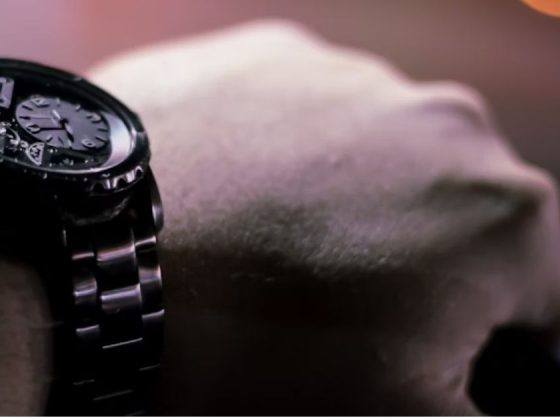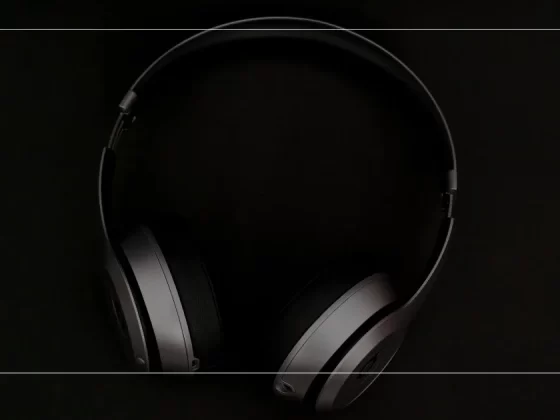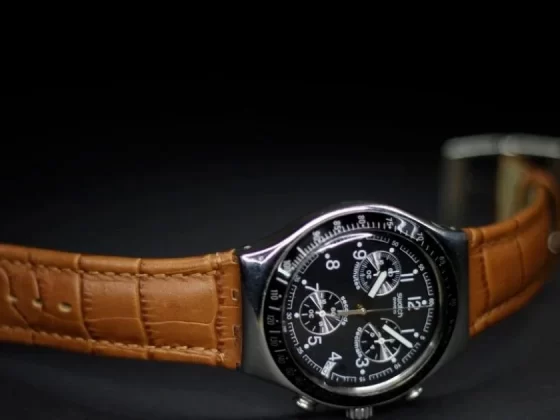The fashion world has evolved beyond fabric and style—enter the era of fashion-tech collabs, where designers and tech innovators create smart, stylish pieces. From jackets that take calls to digital sneakers made for the metaverse, these mashups are everywhere. Louis Vuitton’s connected luggage offers real-time tracking, Gucci designs virtual accessories for Roblox, and Levi’s teams up with Google to make interactive tech-infused denim. At this rate, your wardrobe might get a tech degree.
Why Fashion-Tech Collabs Are Surging
The rising appeal of fashion-tech collaborations stems from a growing demand for clothing that goes beyond aesthetics. In a climate where functionality, sustainability, and innovation are top priorities, garments are expected to do more than look stylish. Temperature-regulating fabrics, phone-charging outerwear, and biometric responsiveness are redefining the purpose of Fashion. These features are not gimmicks—they’re reshaping the fundamental expectations of what clothing should deliver in a fast-paced, tech-integrated world.
Beyond performance, these collaborations are also creating a measurable environmental impact. AI-driven trend forecasting enhances supply chain efficiency by anticipating consumer demand more precisely, significantly reducing overproduction and minimizing waste. Augmented reality fitting tools reduce return rates and the need for physical try-ons, minimizing excess inventory and carbon output. Meanwhile, blockchain technology ensures traceability, allowing complete transparency from sourcing to final sale. These innovations signal a shift, where cutting-edge design meets responsible progress.
From Wearables to Wearthings
The next wave of fashion innovation is set to blur the line between style and smart tech in ways once reserved for science fiction. The era of basic wearables—like step-counting watches or fitness trackers—is evolving into something more immersive. Enter wearthings: garments and accessories that don’t just sit on the body but interact with it and the world around it. Picture fabric that shifts hues based on emotional state, jackets that adapt temperature in response to the weather, or dresses that glow in sync with your heartbeat—Fashion becoming a biometric mirror. Even sunglasses could double as real-time translators or AR displays, making international travel as seamless as a swipe.
This goes beyond mere gadgetry—it’s a reimagining of what clothing can be, merging form, function, and intelligence into every thread. This marks a shift from novelty to necessity, reimagining clothing as responsive tools for everyday life. It’s not just about integrating tech for tech’s sake; it’s about transforming garments into intuitive, functional extensions of the wearer’s environment and needs.
Tech-fashion collabs are transforming garments into responsive tools connecting with smart homes, digital assistants, and online avatars. Outfits might be coded to alert when stress levels spike or sync with ambient lighting to set the mood for an event. As the metaverse and real world intertwine, expect digital and physical wardrobes to blend—stylish bodysuits for avatars and intelligent fabrics for real-world wear. In short, Fashion won’t just be worn; it’ll be lived. And in this new frontier, your closet isn’t just stylish—it’s sentient.
Beyond Gadgets: Fashion That Thinks
Fashion tech has officially moved past step counters and smartphone syncs—it’s entering the realm of cognitive design. Today’s innovations blend data, responsiveness, and high Fashion in ways that reimagine what clothing can do. AI-generated design now allows algorithms to sift through social trends, weather data, and even cultural shifts to predict styles and silhouettes that resonate with current moods. Instead of following trends, Fashion begins to anticipate them, learning from digital behavior and environmental cues.
Meanwhile, advancements in materials and production methods are equally mind-blowing. 3D-printed garments from pioneers like Zellerfeld and Iris van Herpen push the limits of personalization and wearable art, offering made-to-measure pieces that defy traditional manufacturing. Smart textiles embedded with biometric sensors, like those in OMsignal’s shirts or CuteCircuit’s LED-studded couture, can monitor heart rate, muscle activity, and even breathing patterns. These garments don’t just fit—they interact, respond, and evolve. It’s a brave new wardrobe where innovation walks the runway and every outfit might have its operating system.
Digital Fashion
Step into a new era where pixels replace fabric, and fashion moves beyond the limits of the physical world. Digital Fashion is reshaping the very essence of style—liberated from fabric and reinvented for pixels, augmented reality, and the endless scroll of social media. It’s a new frontier where garments exist purely in the digital space, blending innovation with expression in ways the physical world never could.
Innovators like DressX, The Fabricant, and Replicant Fashion are at the forefront, crafting fully virtual garments that are “worn” through augmented reality or digitally layered onto photos and videos. These creations go far beyond playful filters—they represent avant-garde design for the virtual realm, embraced by influencers, gamers, and style-forward users shaping bold identities in the digital space.
Digital Fashion is compelling because of its boundless creativity and zero physical waste. Picture silhouettes that float like art installations, holographic textiles that glisten with live-streamed data, or sci-fi-inspired bodysuits that appear to ignite—digitally. This is Fashion that bends reality, blending spectacle with tech-savvy storytelling. There’s no production line, no shipping, no laundry. Just drag, drop, and dazzle. And in a world where social media presence holds as much weight as a real-life outfit, digital clothing becomes a tool for self-expression, status, and sustainable storytelling. Whether worn in the metaverse or flexed in a filtered selfie, digital Fashion isn’t just a trend—it’s a bold redefinition of what it means to dress up in the 21st century.
Sustainability Gets a Makeover
The fashion industry has long struggled with its environmental footprint, from overproduction to textile waste and opaque supply chains. However, the tide is shifting due to technological innovations reshaping the design, production, and consumption of clothing. Artificial intelligence is leading the charge in more intelligent production planning—by analyzing consumer trends and purchasing behavior, AI helps brands forecast demand more accurately, slashing the overproduction that leads to unsold inventory and eventual landfill overflow. This isn’t just an innovative business—it’s a significant win for sustainability.
At the same time, blockchain technology is introducing radical transparency to Fashion’s opaque supply chains. By tracking the journey of each material from origin to retail, blockchain technology verifies ethical sourcing and labor practices, holding brands accountable like never before. On the design side, digital tools are cutting waste before a single stitch is sewn—virtual samples and 3D prototyping allow designers to tweak silhouettes, colors, and patterns without producing a mountain of test garments.
Add in the rise of on-demand manufacturing, where garments are only made once ordered, and you have a system that flips fast Fashion. The result? A future where Fashion is stylish, innovative, efficient, and ethically conscious is a high-tech evolution of “look good, feel good.”
Icons Leading the Charge
What once felt like a futuristic flirtation is a full-blown love affair between Fashion’s elite and the tech world. Industry icons are no longer on the sidelines—they’re driving innovation, turning traditional runways into digital playgrounds and performance labs. Take Balenciaga x Fortnite, for example: a collision of couture and console that introduced limited-edition virtual skins, merch drops, and high Fashion into gaming culture. This partnership didn’t just break boundaries—it redefined what it means to “wear” a brand in the digital age.
Prada x Adidas makes a compelling case that luxury and performance aren’t rivals—they’re dance partners. The collaboration blends sleek, high-fashion aesthetics with athletic-grade function, proving that style can sprint just as well as it struts. Ralph Lauren x Snapchat takes a different route, weaving heritage into the digital fabric through augmented reality filters that reimagine preppy staples for the screen-age.
It’s a playful fusion of tradition and tech, inviting users to try on iconic looks virtually, tweak them to taste, and share them with a tap. And the fashion-tech energy isn’t one-sided—gadgets are getting their glow-up, too. The Nothing Ear (stick) comes housed in a crystal-clear case that whispers couture more than circuitry, while Meta x Ray-Ban smart glasses could pass for a glossy editorial shot. The verdict? Tech isn’t just following Fashion anymore—it’s walking the runway right alongside it.
Where It’s All Headed
Fashion x Tech is no longer just about smartwatches and fitness trackers—it’s evolving into an ecosystem where every garment, accessory, and closet function becomes part of a fully integrated, responsive lifestyle. Picture this: sneakers that monitor emotional cues through gait analysis and adjust support based on stress levels. Handbags with built-in power banks and anti-theft GPS keep your phone powered up and your essentials secure while you’re on the move. Closets are evolving into smart style hubs, powered by AI-driven apps that curate real-time outfit suggestions. These intelligent systems consider weather conditions, daily schedules, viral TikTok trends, and emotional cues to deliver personalized styling, turning everyday dressing into a seamless, data-informed experience.
What sounds like a Black Mirror episode is already in motion. Fashion brands are venturing into next-gen territory with biometric fabrics that respond to physiological changes, voice-activated wardrobe assistants for hands-free styling, and digital closets that integrate with AR mirrors for lifelike virtual fittings. This fusion of tech and textiles reshapes how garments are selected, styled, and experienced, blending convenience with a futuristic edge.
The fashion industry isn’t just dipping its toe into the tech world—it’s diving headfirst into a future where clothes aren’t just worn but interacted with. This next wave of innovation blends convenience, customization, and creativity, bringing Fashion out of the closet and into the cloud. The question isn’t if your wardrobe will get smarter—it’s when.
Fashion-Tech Collabs Driving Smart Style Trends
Fashion and technology collaborations have evolved into a driving force, reshaping the very foundation of how clothing functions and communicates. These partnerships go beyond aesthetics, tackling real-world challenges through innovative design and redefining the purpose of apparel in everyday life. The focus has shifted from merely following trends to rewriting the playbook entirely—creating garments that perform, adapt, and even think.
This merging of industries signals a future where form and function are inseparable. Whether driven by sustainability, data, or performance, Fashion infused with technology no longer predicts the next big thing—it is the next big thing. As boundaries blur between digital and physical, the result is a new era where clothing doesn’t just impress visually—it innovates meaningfully.








